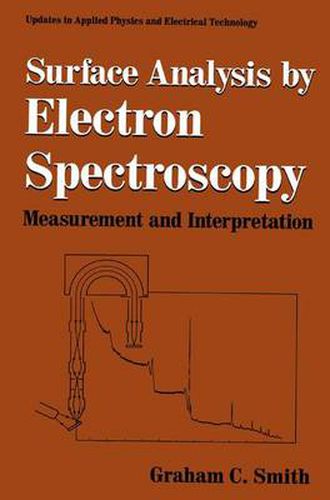Readings Newsletter
Become a Readings Member to make your shopping experience even easier.
Sign in or sign up for free!
You’re not far away from qualifying for FREE standard shipping within Australia
You’ve qualified for FREE standard shipping within Australia
The cart is loading…






This title is printed to order. This book may have been self-published. If so, we cannot guarantee the quality of the content. In the main most books will have gone through the editing process however some may not. We therefore suggest that you be aware of this before ordering this book. If in doubt check either the author or publisher’s details as we are unable to accept any returns unless they are faulty. Please contact us if you have any questions.
This book is t~e fifth in aseries of scientific textbooks designed to cover advances in selected research fields from a basic and general view point. The reader is taken carefully but rapidly through the introductory material in order that t~e significance of recent developments can be understood with only limited initial knowledge. The inclusion in the Appendix of the abstracts of many of the more important papers in the field provides further assistance for the non-specialist, and acts as aspringboard to supplementary reading for those who wish to consult the original liter ature. Surface analysis has been the subject of numerous books and review articles, and the fundamental scientific principles of t~e more popular techniques are now reasonably weIl established. This book is concerned with the very powerful techniques of Auger electron and X-ray photoelectron spectroscopy (AES and XPS), with an emphasis on how they may be performed as part of a modern analytical facility. Since the development of AES and XPS in the late 1960s and early 1970s there have been great strides forward in the sensitivities and resolutions of the instrumentation. Simultaneously, these spectroscopies have undergone a veritable explosion, both in their acceptance alongside more routine ana1ytical techniques and in the range of problems and materials to which they are applied. As a result, many researchers in industry and in academia now come into contact with AES and XPS not as specialists, but as users.
$9.00 standard shipping within Australia
FREE standard shipping within Australia for orders over $100.00
Express & International shipping calculated at checkout
This title is printed to order. This book may have been self-published. If so, we cannot guarantee the quality of the content. In the main most books will have gone through the editing process however some may not. We therefore suggest that you be aware of this before ordering this book. If in doubt check either the author or publisher’s details as we are unable to accept any returns unless they are faulty. Please contact us if you have any questions.
This book is t~e fifth in aseries of scientific textbooks designed to cover advances in selected research fields from a basic and general view point. The reader is taken carefully but rapidly through the introductory material in order that t~e significance of recent developments can be understood with only limited initial knowledge. The inclusion in the Appendix of the abstracts of many of the more important papers in the field provides further assistance for the non-specialist, and acts as aspringboard to supplementary reading for those who wish to consult the original liter ature. Surface analysis has been the subject of numerous books and review articles, and the fundamental scientific principles of t~e more popular techniques are now reasonably weIl established. This book is concerned with the very powerful techniques of Auger electron and X-ray photoelectron spectroscopy (AES and XPS), with an emphasis on how they may be performed as part of a modern analytical facility. Since the development of AES and XPS in the late 1960s and early 1970s there have been great strides forward in the sensitivities and resolutions of the instrumentation. Simultaneously, these spectroscopies have undergone a veritable explosion, both in their acceptance alongside more routine ana1ytical techniques and in the range of problems and materials to which they are applied. As a result, many researchers in industry and in academia now come into contact with AES and XPS not as specialists, but as users.